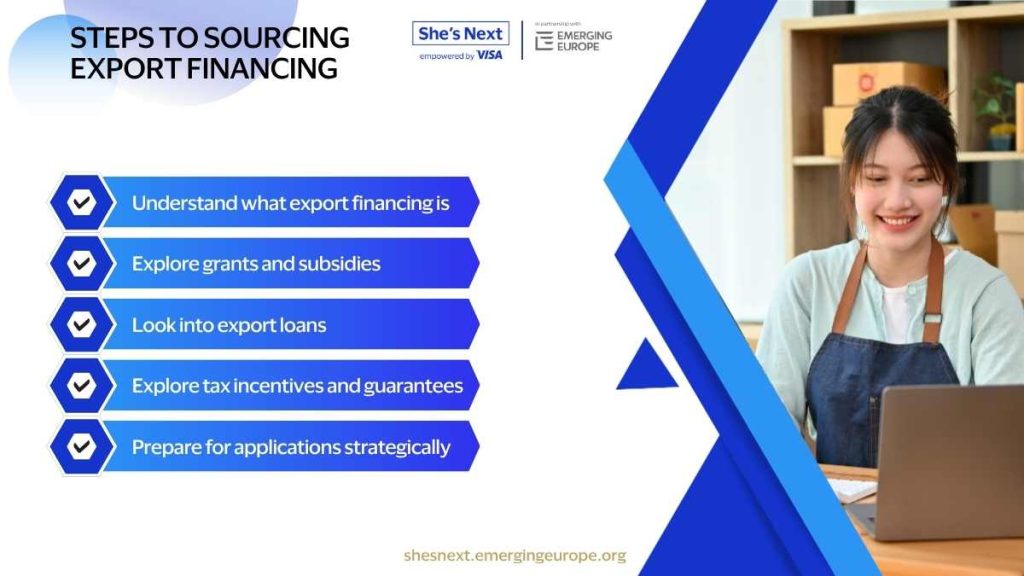
Export Financing Options for SMEs: Grants, Loans, and Incentives
Expanding abroad requires capital — from product adaptation to logistics and marketing.
For many small businesses, access to the right financing makes all the difference. In this guide, we’ll walk through practical export financing options — from grants and loans to government-backed incentives — and how to choose what fits your business best.
Understand what export financing is
Export financing helps you cover the costs of going international — from producing goods to shipping, insurance, and entry into new markets. It’s available through banks, government agencies, and development programmes that support SME growth.
Tip: Be clear on what you need funding for — trade shows, new distributors, or digital marketing. Matching your purpose to the right product increases your approval chances.
Explore grants and subsidies
Grants and subsidies are excellent first steps because they don’t require repayment. Many government export agencies and EU programmes fund export readiness activities, product certification, and participation in trade fairs. These programmes are competitive and often require well-prepared proposals showing your business’s potential contribution to economic growth or innovation.
Tip: Highlight measurable outcomes — job creation, sustainability, or technology adoption. Funders prioritise impact, not just ambition.

Look into export loans
Loans remain a practical option for businesses needing working capital or fulfilling export orders. Commercial banks, development banks, and export credit agencies (ECAs) often offer tailored SME loans — sometimes with reduced interest rates for women-led or green businesses. These can fund production, shipment, or inventory for international contracts.
Tip: Strengthen your application with a clear export plan, solid cash flow projections, and proof of confirmed orders or clients. Preparation signals credibility.
Don’t overlook tax incentives and guarantees
Beyond grants and loans, there are powerful financial tools many SMEs overlook. Governments may provide tax deductions, VAT relief, or export income exemptions to encourage global trade. Meanwhile, export credit guarantees or insurance — sometimes offered via EBRD or IFC partner banks — protect your business against buyer default or currency fluctuations.
Tip: Combine these incentives with financing. A tax break or guarantee can strengthen your overall funding strategy and mitigate risk.
Prepare for applications strategically
Treat funding applications as strategic exercises, not paperwork. Start by identifying 2–3 suitable programmes or financial institutions aligned with your goals. Tailor your proposal to each one, emphasising your export potential and market research. Keep core documents ready — your business plan, financial statements, and proof of registration.
Tip: If an application is declined, ask for feedback. Each round builds your expertise and strengthens your next submission.
Export financing isn’t reserved for large corporations. With preparation and persistence, small businesses can access powerful tools to scale globally. Explore available programmes, apply strategically, and remember: every successful export journey starts with smart financial planning — and the confidence to take that first step.
Export financing isn’t just for big players — with the right preparation, SMEs can access powerful tools to go global. Explore your options, start small if needed, and remember: every successful export journey begins with smart financial planning.
New Free Courses — Made for Ambitious Women Entrepreneurs!
It’s time to grow smarter, adapt faster, and take your business global.
Explore two powerful courses available exclusively to She’s Next members:
The Reinvention Masterclass for Start-up Founders
Beyond Borders: Building for Global Success
Enroll today — it’s free!





